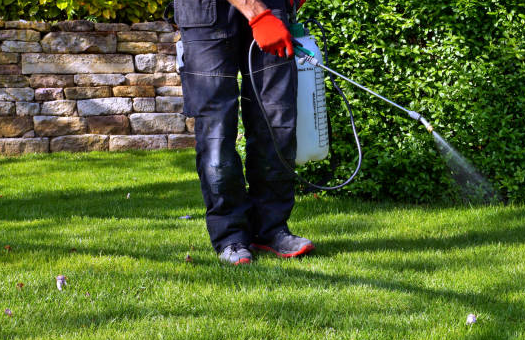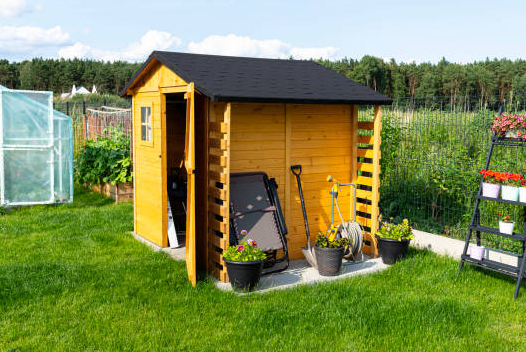In many gardens, people tend to focus on the vibrant, colorful flowers, often overlooking the humble grass that forms the foundation of a well-designed landscape. Grass lawns, however, play a crucial role in creating open spaces that are perfect for relaxation and recreation. In fact, lawns are often the focal point of private gardens, providing not only aesthetic value but also functional space.
In landscape design, lawns can serve as a standalone feature or blend beautifully with rocks, artificial hills, trees, flowers, and slopes, creating unique and dynamic landscapes. As such, lawns should never be underestimated when it comes to garden design.
Now, let’s dive into a detailed guide to better understand lawn basics, growth habits, and how to take care of them.

Lawn Basics and Growth Habits
Warm-Season Grass
The ideal growing temperature for warm-season grasses is between 25°C and 35°C. These grasses are heat-tolerant, disease-resistant, and low-maintenance. However, they generally have a shorter growing period and produce a lighter shade of green. Popular types include Bermuda grass, Zoysia grass, Buffalo grass, and Crabgrass.
Cool-Season Grass
The optimal temperature for cool-season grasses is between 15°C and 25°C. These grasses stay green for longer periods and require more precise management. They are typically more vibrant and have a deep green color. Common varieties include Fescue, Bluegrass, Ryegrass, and Bentgrass.
Daily Lawn Care Tips
Weed and Debris Removal
-
-
Weed Control: Spring is the time when weeds start to sprout, so it’s important to remove overgrown or dense weeds early on to ensure a uniform and tidy lawn. If weeds are widespread, use low-toxicity herbicides to control them.
-
Dead Grass: Dead or thatched grass can form a thick mat on the soil surface, blocking nutrients and water from reaching the roots. This can make the soil more acidic. In fall, use a specialized rake or dethatcher to remove the thatch layer.
-
Controlling Grass Growth
Grass that grows too quickly can detract from the aesthetic appeal of your lawn and may increase the risk of pest infestations. To manage fast-growing grass, you can:
-
-
Regular Mowing: Keep grass neatly trimmed to maintain its appearance.
-
Growth Regulators: Use specific lawn growth regulators (chemicals) that slow down the grass growth rate. These treatments reduce the need for frequent mowing and encourage stronger root development, which enhances the lawn’s resilience.
-
Pest and Disease Management
A healthy lawn will naturally attract a variety of insects, but it’s essential to prevent pest and disease problems. If pests start causing harm to your grass, it’s usually an indication of poor lawn care practices. Avoid using highly toxic synthetic pesticides. Instead, opt for organic, low-toxicity solutions that protect both your lawn and the surrounding environment.
Aerating and Ventilating the Soil
Over time, the lawn’s root system becomes compacted, especially in areas with heavy foot traffic. This can restrict water drainage and oxygen flow to the roots. To remedy this, aerate the lawn by using an aerator or perforating tool to create holes about 4 cm deep in the soil. Aerating helps to maintain soil structure, encourage root growth, and improve drainage. After aerating, it’s best to mow the lawn to help distribute nutrients evenly.

Fertilizing Your Lawn
Fertilization is key to promoting healthy grass growth. Ideally, you should fertilize before watering the lawn. Here are some tips for effective lawn fertilization:
-
-
Nitrogen, Phosphorus, and Potassium Fertilizers: Use a balanced fertilizer with nitrogen (N), phosphorus (P), and potassium (K) to promote lush green growth and root development. Nitrogen encourages leaf growth, phosphorus helps with root strength, and potassium boosts the plant’s resilience to diseases and extreme weather.
-
Avoid Urea: Urea is a synthetic fertilizer that can attract pests and is harmful to the environment in large quantities. Use organic or slow-release fertilizers instead.
-
Frequency: Generally, fertilize your lawn 4 times a year, adjusting the amount based on the soil’s fertility. A typical application rate is 14 to 20 lbs per acre.
-
Watering the Lawn
Watering is crucial to ensuring the grass recovers and turns green in the spring. Proper irrigation encourages strong root growth and helps your lawn thrive. During dry and windy spring months, you may need to increase watering.
-
-
Watering Technique: Water the lawn deeply but infrequently, allowing the roots to penetrate deeper into the soil. This encourages deep rooting and strengthens the lawn’s drought resistance.
-
Sprinkler Coverage: Ensure that the sprinkler system covers all areas of the lawn, avoiding any dry spots.
-
Conclusion
This guide offers an in-depth look into lawn design and maintenance, from understanding the basic types of grass to the essential care practices for a lush, healthy lawn. The key to a beautiful lawn is regular maintenance, attention to detail, and understanding the specific needs of the grass in your garden. With patience and proper care, your garden lawn will be a beautiful and functional space for relaxation and enjoyment.

